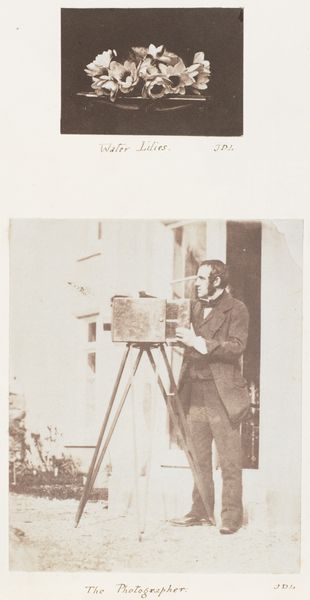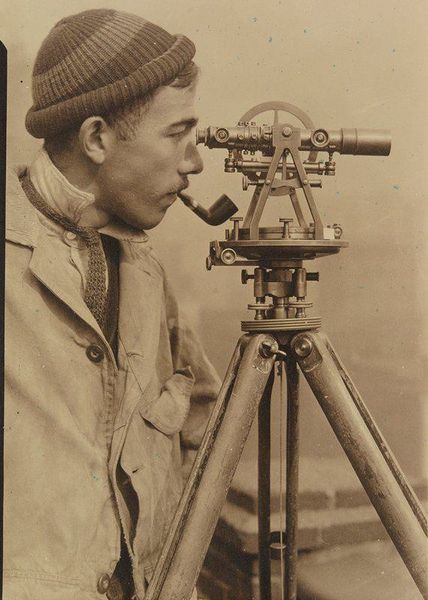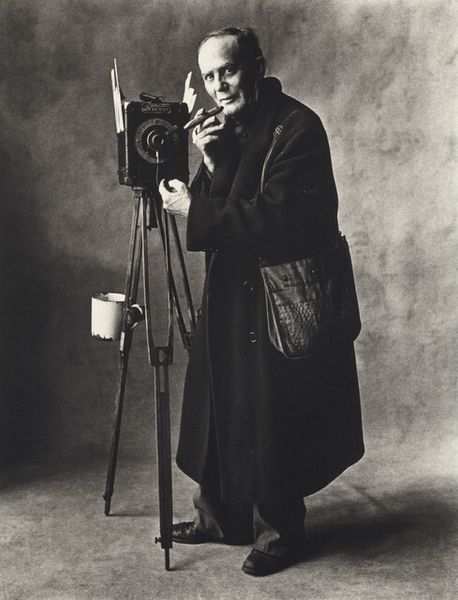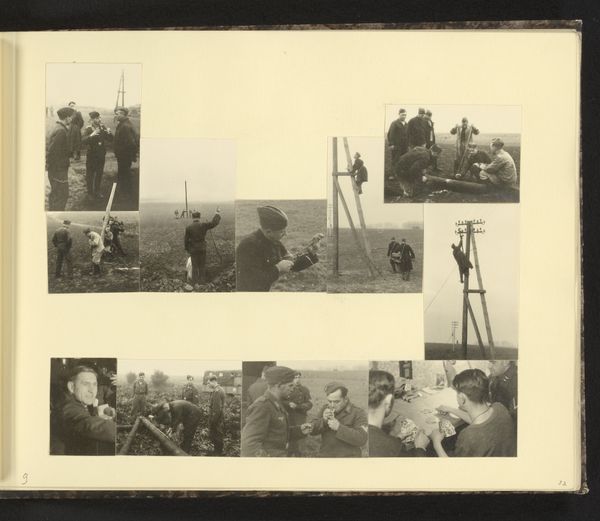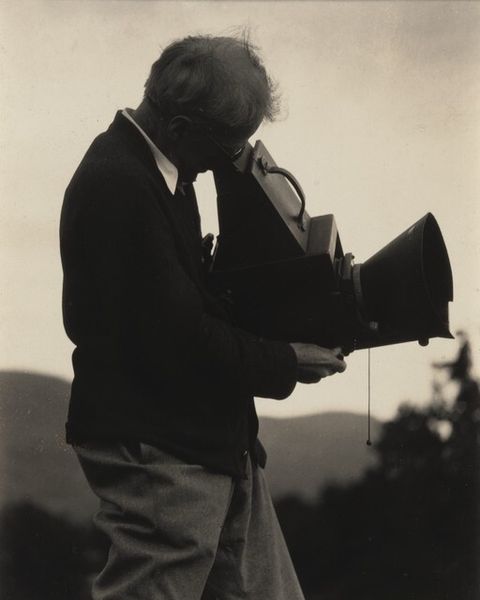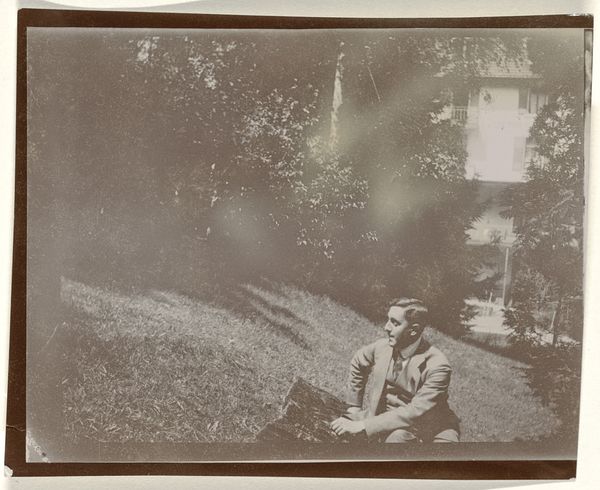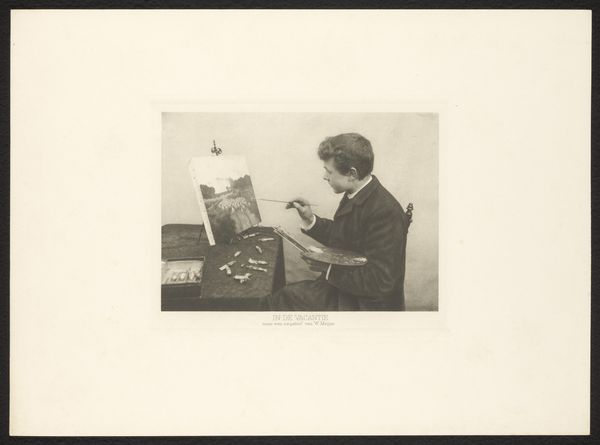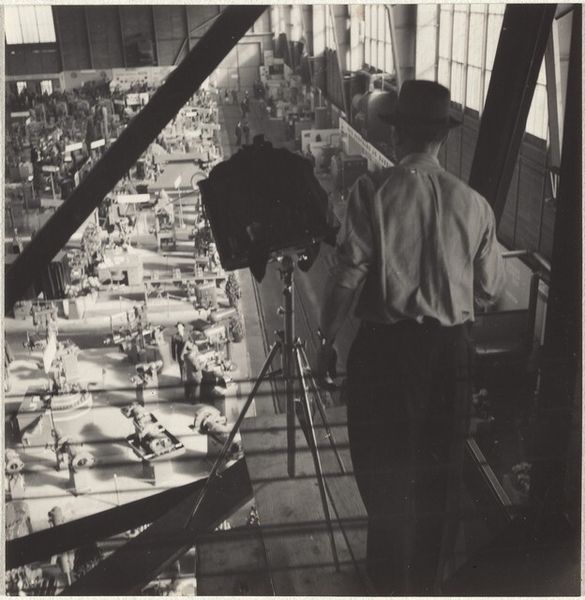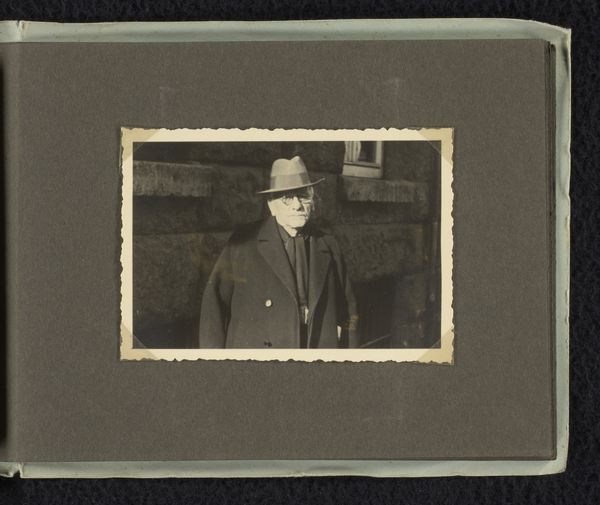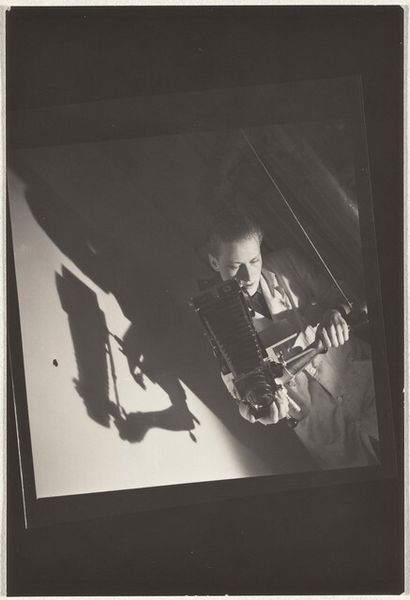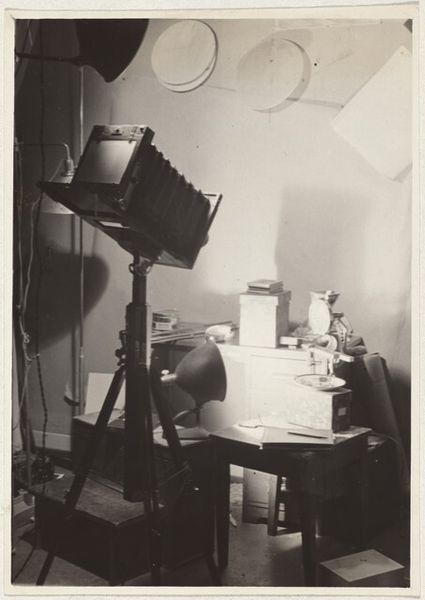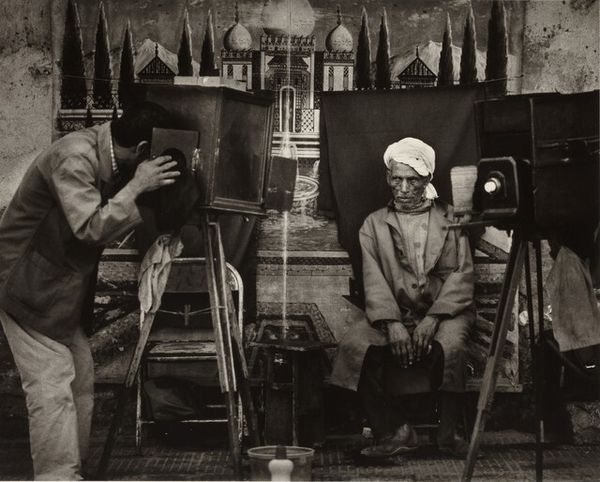
photography
#
portrait
#
16_19th-century
#
self-portrait
#
pictorialism
#
landscape
#
photography
Dimensions: 5.7 × 4.2 cm (image); 8.2 × 10.2 cm (slide)
Copyright: Public Domain
Editor: Here we have Alfred Stieglitz's "Self-Portrait with camera, tripod and pistol" from 1886, a photograph held at the Art Institute of Chicago. I find the title quite intriguing, given what we now know about gun culture in America. What’s your interpretation of Stieglitz including a pistol in the title, yet it’s not even visible in the image itself? Curator: I see it as Stieglitz challenging the conventional male gaze of the late 19th century, almost in defiance of traditional notions of masculine representation. In using photography, typically understood as 'objective,' to craft his self-image, he's wrestling with power, isn’t he? Where do we locate power? Is it in the act of seeing, or in the implied threat— the 'pistol'— that remains unseen but named? Editor: So, the pistol could symbolize a kind of...latent masculine authority, subtly threatening, yet absent from his physical presentation? Curator: Precisely. And consider the backdrop, that's typical of the landscape genre, often seen as a 'feminine' counterpoint. By merging self-portraiture, landscape, and this invisible symbol of patriarchal power, he’s essentially deconstructing all these existing social constructs and engaging with anxieties around class and gender, all at once. What would it mean for him to omit such 'signifiers of masculinity'? Editor: It feels like it creates a fascinating tension, acknowledging and questioning the conventional ideas of masculinity simultaneously. This interplay also adds layers to the work's meaning beyond the surface representation. Curator: Indeed. He compels us to question the very codes that govern how identity is constructed and perceived. Do you feel this impacts on our interpretation of photography’s early development? Editor: Absolutely. It redefines the photographic process as being less about pure replication and more as a tool for intentional expression. It makes you rethink how 'truth' itself gets presented through this 'objective' lens. Thank you for sharing your perspective. Curator: My pleasure. It is in such discussions we recognize the profound power of art to challenge norms and rewrite cultural scripts.
Comments
No comments
Be the first to comment and join the conversation on the ultimate creative platform.
